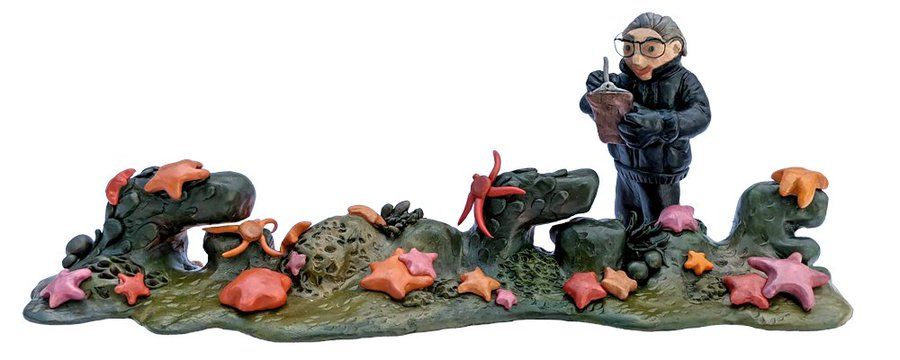Irene Bernasconi was honoured with a Google Doodle on Monday, November 7. It honours her work and dedication to biology by depicting her surrounded by starfish, one of her favourite research specimens.
Also Reads| NASA’s Cygnus Cargo Mission launches ovarian cells and other experiments to space
Who is Irene Bernasconi?
Born on September 29, 1986, Irene Bernasconi was an Argentine marine biologist who specialised in Echinoderm research and was best known for her work in the Antarctic.
She was Argentina’s first echinoderm specialist, and she spent 55 years researching echinoderms found in the Argentine Sea. Her primary focus was sea stars, but she also studied brittle stars and sea urchins.
Bernasconi described a number of new genera and species during her career. Her first taxonomic publication, in which she described new species of the genus Pteraster, appeared in 1935.
Also Reads| Meet Gaia BH1, the closest-known Black Hole from Earth
She described two new species of the genus Luidia in 1941.
Bernasconi revised the taxonomy of several families between 1937 and 1980, including Pterasteridae, Luidiidae, Odontasteridae, Gonisasteridae, Ganeriidae, Asterinidae, and Echinasteridae. She described the new genus Vemaster, as well as four new species, in 1965.
Bernasconi was the first woman to lead an Antarctic expedition and one of the first female Argentine scientists to conduct research in Antarctica after arriving on November 7, 1968.
She was 72 years old at the time. Her colleagues included microbiologist Maria Adela Caria, marine biologist Elena Martinez Fontes, and botanist Carmen Pujals. These scientists are known as the “Four of Melchior” because they conducted their research and expedition from the Melchior Base Antarctic station.
Also Reads| Elon Musk reveals why he is not banning account that follows his jet
The four scientists spent two and a half months in Antartica, staying at Melchior Base on Gamma Island. They collected water samples and specimens of deep sea flora and fauna. Mud and over 2,000 examples of Bernasconi’s specialty, echinoderms, were also discovered.
In recognition of being the first female group of scientists to conduct research in Antarctica, the “Embajada de Mujeres de América” (Embassy of Women of America) presented each member of the expedition with a commemorative medal in 1969.
The group received a number of posthumous honours. The Argentine Foreign Ministry, the Argentine Antarctic Institute, and the National Antarctic Directorate honoured the scientists with four Antarctic place names approved by the Naval Hydrography Service to commemorate the campaign’s 50th anniversary: Pujals Bay, Cape Cara, Cape Fontes, and Bernasconi Bay.
Bernasconi died on July 7, 1989 at the age of 92.
Also Reads| Elon Musk on Kathy Griffin’s Twitter account suspension: ‘She can have it’
On the International Day of Women and Girls in Science, February 11, 2022, President Alberto Fernández renamed the Casa Rosada’s Hall of Scientists the Argentine Science Hall, with “the Four of Melchior” included in a display of honoured Argentinian women scientists. Bernasconi’s photograph was added to the hall’s image gallery, along with those of ten other Argentine women scientists.
She was the Google Doodle on November 7, 2022, and her main focus was starfish.






